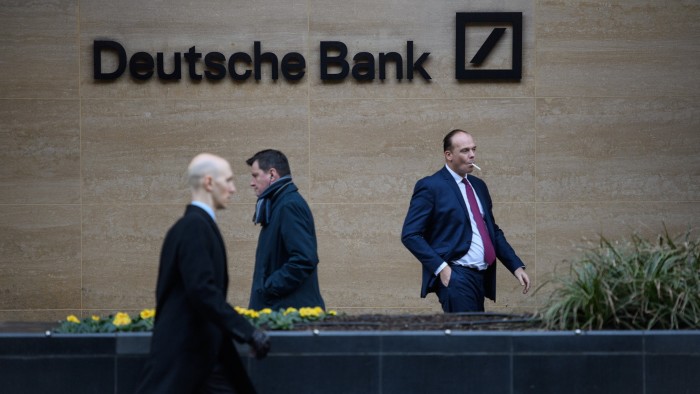Unlock the Editor’s Digest for free
Roula Khalaf, Editor of the FT, selects her favourite stories in this weekly newsletter.
Deutsche Bank has undertaken a three-year hiring spree that has reversed almost all of the steep cuts to jobs imposed by chief executive Christian Sewing at the start of his tenure, underlining the scale of the challenge the bank faces in reducing costs.
The increase in staff was concentrated in back-office roles that do not generate revenue, a Financial Times analysis shows, even as the German lender has invested billions of euros in IT to help automate some of those functions and streamline workflows.
Bloated levels of staffing have been an intractable problem for Deutsche, hampering the bank’s efforts to control costs. Although Sewing has succeeded in trimming 2 per cent from the bank’s non-interest costs since the end of 2018 — and increased revenues by 19 per cent — he has watered down, missed or dropped cost pledges five times since 2021, most recently last month.
At the onset of the biggest restructuring in a generation in 2019, Sewing promised to shave 18,000 jobs from the bank’s 92,000 strong-staff by 2022.
The lowest he managed was 83,000 at the end of 2021.
In the three years since, the number of non-client-facing staff has increased 11 per cent while the number of front office bankers remained steady, taking the total number of Deutsche employees to almost 90,000 — close to the level at the onset of Sewing’s original cuts.

Deutsche Bank’s sprawling “infrastructure functions” — which span human resources, operations, risk, compliance, IT, legal and communications — grew to 58,000 employees at the end of last year, compared with 52,000 at the end of 2022.
Deutsche Bank reports since 2018 show the bank’s front office staff halved during Sewing’s tenure to 32,000, while the number of back-office workers has almost doubled to 58,000.
The lender told the FT that its annual disclosures on job numbers before 2022 were “not comparable” with current disclosed as it had “adapted the methodology several times over the intervening years”. Jobs that were previously counted as front office have now been reclassified as back-office ones.
In Deutsche’s retail unit, which has closed 757 branches since 2018 — a third of its global network — but has been struggling with the fallout from a botched IT integration, the rise in back-office staff since 2022 has almost entirely offset a 10 per cent drop in client-facing employees, the FT analysis shows.
The bank told the FT that the increase in back-office staff was partly the consequence of having to strengthen “technology and controls”.
For years, it has been struggling to come to terms with regulatory scrutiny over its compliance, transaction monitoring and anti-money laundering controls. Deutsche also needed additional manpower to work through a backlog of issues linked to the troubled migration of retail brand Postbank on to the group’s systems.
A senior banker told the FT that internal workflows had become extraordinarily slow and cumbersome. “In some cases, you need more than 50 signatures just to onboard a single new vendor,” they said. Deutsche Bank disputes the number of signatures, stating that “often a couple of signatories is sufficient”.
The bank also said that it had replaced expensive external IT contractors with its own employees. While this increased the number of people employed directly by the bank, Deutsche said it was cheaper to employ them in-house.
In 2024, the bank cut 3,500 back-office jobs and replaced 1,800 contractors, its latest filings show. It hired 1,300 “tech specialists” and 400 revenue-generating staff at the same time. Overall headcount only decreased by 400, however.




